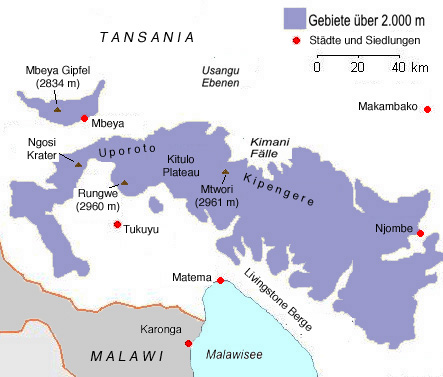|
Wanji People
The Wanji are an ethnic and linguistic group native to Makete District, in the Kipengere Mountains of Njombe Region and also native to Mbeya Region in southern Tanzania Tanzania (; ), officially the United Republic of Tanzania ( sw, Jamhuri ya Muungano wa Tanzania), is a country in East Africa within the African Great Lakes region. It borders Uganda to the north; Kenya to the northeast; Comoro Islands and .... In 2003 the Wanji population was estimated to number 28,000. wanji language is the composition of nearby languages like Sangu, Kinga, Kyusa, Safwa and Ben Ethnic groups in Tanzania {{Tanzania-ethno-group-stub ... [...More Info...] [...Related Items...] OR: [Wikipedia] [Google] [Baidu] |
Makete
Makete District is one of the six Districts of Tanzania, districts of Njombe Region of Tanzania. Its administrative seat is the town of Iwawa. It is bordered to the north and west by the Mbeya Region, to the east by the Njombe, Njombe District and to the south by the Ludewa, Ludewa District. It is divided into six divisions and 17 wards. Makete District was founded in 1979 with the policy of the Ujamaa. Before, this part of Iringa Region belonged to Njombe District. The district is known for growing apples due to the favorable climate. According to the 2002 Tanzania National Census, the population of the Makete District was 128,520.] The Kinga people, Wakinga people mostly live in Makete District. Geography The area of the district is 5,800 km2; however, only 371 km2 of the land is useful for agriculture. The region is at an altitude of 1,500 to 3,000 m above sea level, being crossed by both the Livingstone Mountains and the Kipengere Range. Temperatures range fro ... [...More Info...] [...Related Items...] OR: [Wikipedia] [Google] [Baidu] |
Kipengere Mountains
The Kipengere Range, also known as the Livingstone Mountains, lies entirely in Njombe Region in southwest Tanzania at the northern end of Lake Nyasa. Near Lake Nyasa they are known as the Kinga Mountains. It is a plateau-like ridge of mountains running southeastwards from the basin of the Great Ruaha River in the north to that of the Ruhuhu River in the south, and forms part of the eastern escarpment of the East African Rift. The range is mostly clad in montane grasslands, renowned for their botanical diversity and displays of flowers, with montane evergreen forests mostly in stream valleys. Some sources use the names Kipengere Range or Livingstone Mountains to describe the entire range, while others distinguish the Livingstone Mountains as the southwest-facing escarpment which runs along the shore of Lake Malawi, and the Kipengere Range as the high ridge that defines the northeastern edge of the Kitulo Plateau. Geography From the town of Mbeya the range runs south-east and ... [...More Info...] [...Related Items...] OR: [Wikipedia] [Google] [Baidu] |
Njombe Region
Njombe Region (''Mkoa wa Njombe'' in Swahili) is one of Tanzania's 31 administrative regions. The region covers a land area of . The region is comparable in size to the combined land area of the nation state of El Salvador. Njombe Region is bordered to the north by the Iringa Region and Mbeya Region, to the east by Morogoro Region, to the south by the Ruvuma Region and to the west by Lake Nyasa. The regional capital is the municipality of Njombe. According to the 2012 national census, the region had a population of 702,097. Etymology The name Njombe originated from a name of a tree species called ‘''Mdzombe''’ for singular and ''Mazdombe'' for plural which then dominant in one of its localities known as Mdandu. And it was in Mdandu where the Germans chose to build an administrative and defence block; the Boma. Geography The Njombe Region is situated in Tanzania's Southern Highlands Zone. It shares borders with the regions of Iringa to the north, Morogoro to the east, M ... [...More Info...] [...Related Items...] OR: [Wikipedia] [Google] [Baidu] |
Mbeya Region
Mbeya Region (''Mkoa wa Mbeya'' in Swahili) is one of Tanzania's 31 administrative regions. The region covers an area of . The region is comparable in size to the combined land area of the nation state of Guinea Bissau. Mbeya Region is bordered to the east by Singida Region, Iringa Region and Njombe Region. The region is bordered to the south by Malawi and Lake Nyasa. To the north the region borders southern Tabora Region. Lastly, Mbeya is bordered to the west by Songwe Region. The regional capital is the city of Mbeya. According to the 2012 national census, the region had a population of 2,707,410. Geography Mbeya Region is located between latitudes 7 degrees and 9 degrees 31' south of the equator and between longitudes 32 degrees and 35 degrees east of Greenwich in Tanzania's Southern Highlands Zone. The Republic of Malawi shares borders with the Mbeya Region to the south, Songwe Region to the west, Singida and Tabora Regions to the north, and Iringa and Njombe Regions to the ... [...More Info...] [...Related Items...] OR: [Wikipedia] [Google] [Baidu] |
Tanzania
Tanzania (; ), officially the United Republic of Tanzania ( sw, Jamhuri ya Muungano wa Tanzania), is a country in East Africa within the African Great Lakes region. It borders Uganda to the north; Kenya to the northeast; Comoro Islands and the Indian Ocean to the east; Mozambique and Malawi to the south; Zambia to the southwest; and Rwanda, Burundi, and the Democratic Republic of the Congo to the west. Mount Kilimanjaro, Africa's highest mountain, is in northeastern Tanzania. According to the United Nations, Tanzania has a population of million, making it the most populous country located entirely south of the equator. Many important hominid fossils have been found in Tanzania, such as 6-million-year-old Pliocene hominid fossils. The genus Australopithecus ranged across Africa between 4 and 2 million years ago, and the oldest remains of the genus ''Homo'' are found near Lake Olduvai. Following the rise of '' Homo erectus'' 1.8 million years ago, humanity spread ... [...More Info...] [...Related Items...] OR: [Wikipedia] [Google] [Baidu] |


